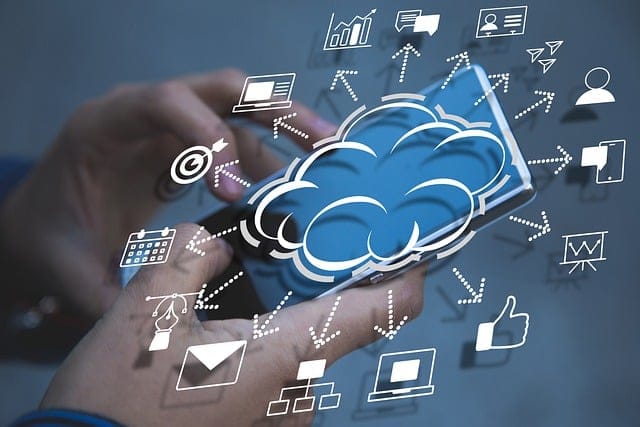Mobile edge computing is a transformative technology that enhances data processing at the edge of a network. By enabling computing at the edge, organizations can reduce latency, improve bandwidth efficiency, and enhance overall performance. This blog post will explore the importance of mobile edge computing and how it is reshaping the landscape of SEO digital marketing.
In today’s fast-paced digital world, businesses must stay ahead of the competition. Mobile edge computing facilitates faster data processing and real-time analytics, allowing companies to leverage data-driven insights for better marketing strategies. This evolution is vital for digital marketers seeking to optimize their campaigns and engage their audience effectively.
Readers can expect to learn about the benefits of mobile computing, its integration with various technologies like IoT and fog computing, and its implications for SEO digital marketing. Understanding these concepts will equip marketers with the knowledge to leverage these technologies for maximum impact.
Understanding Mobile Edge Computing
What is Mobile Edge Computing?
Mobile edge computing refers to a distributed computing framework that brings computation and data storage closer to the location where it is needed. This architecture allows for low-latency communication between edge devices and applications, which is crucial for real-time processing.
Mobile edge computing meaning encompasses several aspects, including:
Edge Devices: These are devices that operate at the edge of a network, such as smartphones, IoT devices, and edge servers. They process data locally rather than relying solely on centralized cloud services.
Edge Network: This term describes the network architecture that enables mobile edge computing, allowing seamless communication between devices, servers, and cloud resources.
Fog Computing: Often considered an extension of mobile edge computing, fog computing involves a more extensive network of edge devices that collectively provide computing resources.
The Significance of Mobile Edge Computing in SEO Digital Marketing
Mobile edge computing is increasingly becoming essential for SEO digital marketing. With the rise of IoT edge devices and smart technologies, marketers can gather valuable data to understand consumer behavior and preferences. By processing this data at the edge, businesses can quickly adjust their marketing strategies based on real-time insights.
The use of mobile edge computing enhances website performance, as it minimizes latency and ensures faster loading times. This factor is crucial for SEO, as search engines prioritize user experience in their ranking algorithms. By integrating mobile edge computing into their strategies, marketers can improve their search visibility and user engagement.
Key Benefits of Mobile Edge Computing
1. Reduced Latency
One of the primary advantages of mobile edge computing is the significant reduction in latency. By processing data closer to the source, organizations can achieve faster response times, which is critical for applications requiring real-time interactions. For example, in online retail, quick processing times can enhance user experience, leading to increased conversions.
2. Improved Bandwidth Efficiency
Mobile edge computing helps in optimizing bandwidth usage. By performing computations locally, only the essential data is sent to the cloud, reducing the overall load on the network. This efficiency is vital for digital marketing campaigns that rely on data-heavy applications and real-time analytics.
3. Enhanced Security
Data processed at the edge minimizes the risk of exposure during transmission. By keeping sensitive information closer to the source, businesses can implement robust security measures tailored to edge devices and edge servers. This added security is particularly beneficial for digital marketers handling sensitive customer data.
Mobile Edge Computing and IoT Integration
Understanding Edge IoT Devices
Edge IoT devices play a crucial role in mobile computing. These devices, such as sensors and smart appliances, collect and transmit data that can be processed locally. The integration of IoT with mobile edge computing facilitates:
Real-Time Data Processing: By processing data at the edge, businesses can make immediate decisions based on real-time analytics. This capability is vital for SEO digital marketing strategies that depend on timely responses to consumer behavior.
Improved User Experience: Faster processing times lead to a more seamless user experience, enhancing customer satisfaction and engagement.
Examples of Edge Computing in Action
Several industries are already leveraging mobile computing and IoT integration for enhanced performance:
Smart Cities: By utilizing edge devices for traffic management and monitoring public services, cities can optimize resource allocation and improve the quality of life for residents.
Retail: Retailers are using edge computing to analyze customer behavior in real time, allowing for personalized marketing strategies that boost sales.
Healthcare: In healthcare, edge devices collect patient data and transmit it to edge servers for real-time monitoring, improving patient outcomes and operational efficiency.
Automotive: In the automotive industry, mobile computing facilitates the development of autonomous vehicles by allowing real-time data processing for navigation and safety systems. This technology can analyze data from various sensors and make immediate decisions, enhancing vehicle performance and safety.
The Role of AWS in Mobile Edge Computing
AWS Wavelength and Edge Computing
AWS Wavelength is Amazon’s solution for enabling mobile computing. By extending AWS services to the edge of the 5G network, AWS Wavelength allows developers to build applications with ultra-low latency and high bandwidth.
Edge Cloud Computing: With AWS Wavelength, businesses can seamlessly integrate edge cloud computing into their existing architectures, enhancing their ability to deploy real-time applications.
Multi-Access Edge Computing: AWS’s solution supports multi-access edge computing, allowing different devices and applications to connect and communicate efficiently at the edge.
By leveraging AWS’s capabilities, marketers can enhance their digital marketing strategies through more efficient data processing and improved user engagement.
For more information on AWS Wavelength, check out the official AWS Wavelength documentation.
Challenges of Mobile Edge Computing
While mobile edge computing offers significant advantages, there are challenges to consider:
1. Complexity of Integration
Integrating mobile edge computing with existing infrastructure can be complex. Businesses must ensure compatibility between edge devices, edge servers, and cloud resources to maximize the benefits of this technology.
2. Data Management
With the proliferation of edge devices, managing and securing the data generated at the edge becomes increasingly critical. Organizations must implement robust data management strategies to protect sensitive information and comply with regulations.
3. Regulatory Compliance
As data privacy regulations become stricter globally, businesses utilizing mobile edge computing must ensure compliance. This includes understanding where data is processed and stored, especially with cross-border data flows.
Mobile Edge Computing Use Cases in Digital Marketing
1. Real-Time Customer Insights
One of the most significant benefits of mobile computing is its ability to provide real-time insights into customer behavior. For example, retailers can use edge computing to analyze shopping patterns and preferences instantly. By processing this data at the edge, they can tailor their marketing strategies to target specific customer segments more effectively.
2. Enhanced Content Delivery
Mobile edge computing enables faster content delivery to users, which is essential for SEO and digital marketing. By caching content closer to users through edge servers, businesses can reduce loading times and improve user experience. This improvement can lead to lower bounce rates and higher conversion rates.
3. Personalized Marketing Campaigns
With the insights gained from edge computing, marketers can create more personalized and targeted campaigns. By understanding customer preferences in real time, they can adjust their messaging and offers to resonate with their audience, ultimately leading to higher engagement and sales.
4. Dynamic Pricing Strategies
Businesses can leverage mobile edge computing to implement dynamic pricing strategies based on real-time market conditions and customer behavior. For instance, e-commerce platforms can adjust prices instantly based on demand, competitor pricing, and user engagement metrics.
The Future of Mobile Edge Computing
As technology evolves, so will the capabilities of mobile edge computing. Here are some trends to watch for:
1. Increased Adoption of 5G
The rollout of 5G networks will significantly enhance the capabilities of mobile edge computing. With higher speeds and lower latency, businesses will be able to deploy more sophisticated applications that rely on real-time data processing.
2. Growth of IoT Ecosystems
The proliferation of IoT devices will continue to drive the adoption of mobile edge computing. As more devices connect to the internet, the need for efficient data processing at the edge will become even more critical.
3. Enhanced AI and Machine Learning Capabilities
AI and machine learning will play a significant role in mobile edge computing. By processing data locally, organizations can implement AI algorithms that require real-time insights, allowing for smarter decision-making.
4. Expansion into New Industries
While industries like retail and healthcare are currently leading the charge in mobile edge computing adoption, other sectors, such as agriculture and manufacturing, are beginning to explore its potential. For example, smart farming technologies can utilize edge computing to monitor crop conditions and optimize resource usage.
Mobile Edge Computing: A Case Study
Company Overview: XYZ Retail
XYZ Retail is a global retail chain that has embraced mobile computing to enhance its customer experience. By integrating edge computing into its operations, the company has achieved remarkable results:
Implementation Strategy
Edge Devices: XYZ Retail deployed IoT devices throughout its stores to collect data on customer behavior and inventory levels.
Edge Processing: Data collected from these devices is processed locally, allowing for real-time insights into customer preferences and shopping patterns.
Integration with AWS Wavelength: The company utilized AWS Wavelength to ensure seamless connectivity between its edge devices and cloud infrastructure.
Results Achieved
Increased Sales: By leveraging real-time data insights, XYZ Retail was able to implement targeted marketing campaigns, resulting in a 25% increase in sales.
Improved Customer Satisfaction: The faster processing of customer data allowed for personalized shopping experiences, leading to higher customer satisfaction scores.
Optimized Inventory Management: With real-time inventory monitoring, XYZ Retail reduced stockouts by 15%, ensuring that popular items were always available.
Conclusion
Mobile edge computing is revolutionizing the way businesses approach SEO digital marketing strategies. By leveraging the power of edge computing, organizations can improve efficiency, enhance user experiences, and gain valuable insights into consumer behavior.
As we move toward an increasingly connected world, understanding mobile computing’s implications will be crucial for marketers looking to stay ahead. The benefits of mobile edge computing, including reduced latency and improved bandwidth efficiency, position businesses to thrive in the competitive digital landscape.
Engaging with the concepts discussed in this post will enable marketers to harness the full potential of mobile edge computing, leading to improved strategies and outcomes. Embrace the future of digital marketing by integrating mobile edge computing into your approach and witness the transformative effects on your campaigns.
For additional insights on mobile edge computing and its applications, consider exploring resources from Gartner and Cisco.






